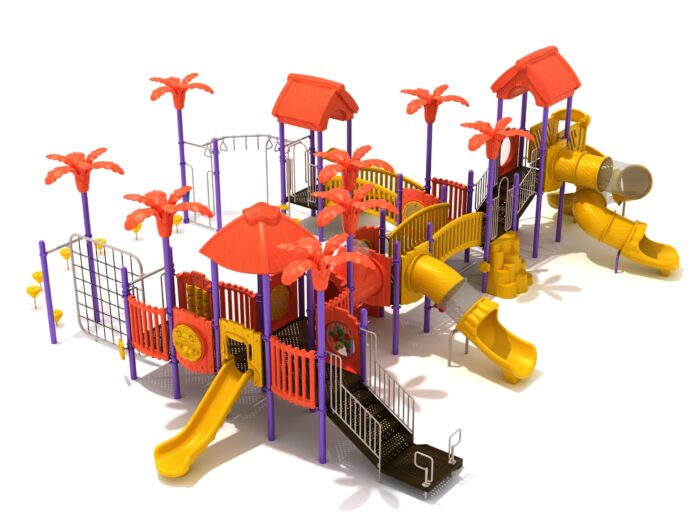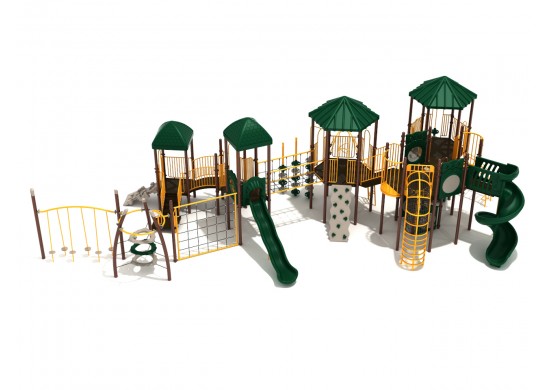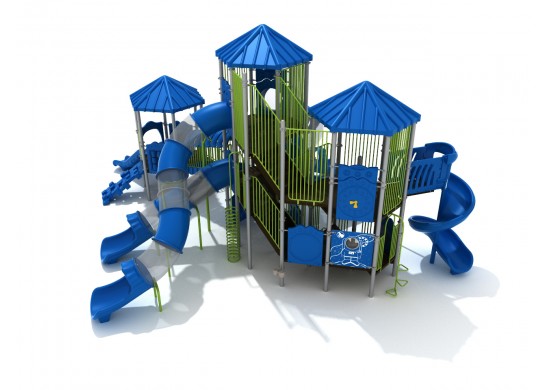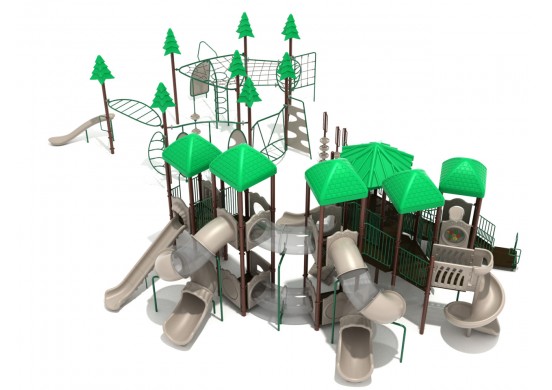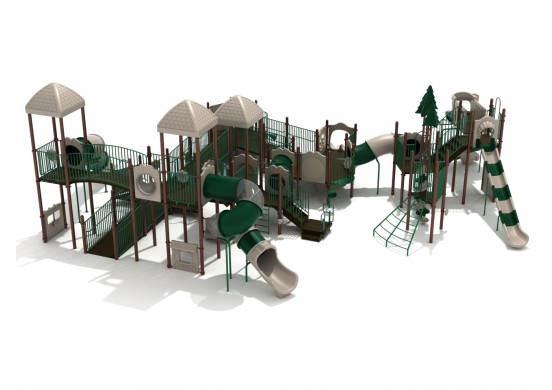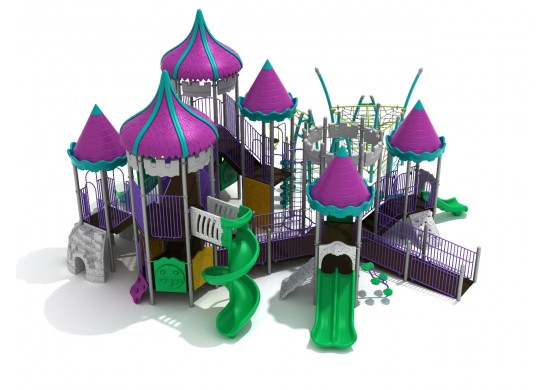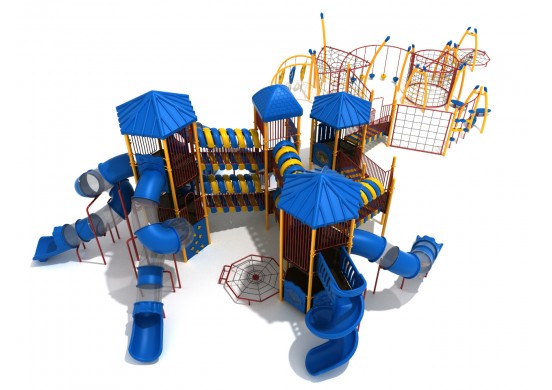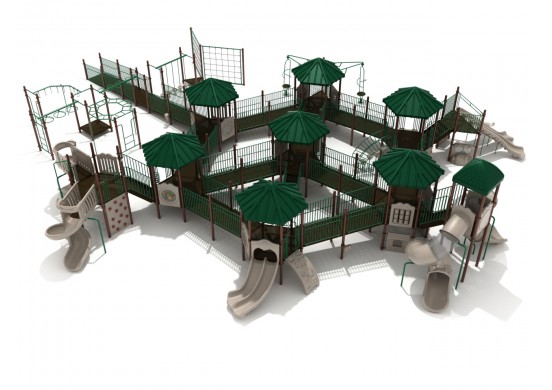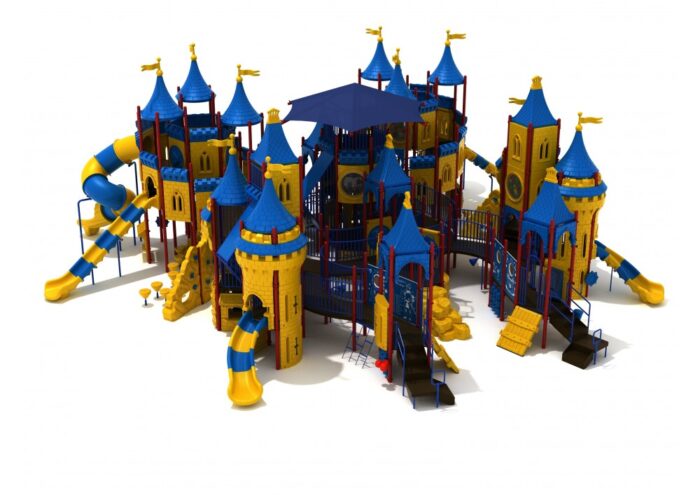Your cart is currently empty!
Outdoor Play Sets
- 5 – 12 Years
- Accessible Equipment
- All Products
- Crawl Tubes & Bridges
- Fully Accessible
- Maximum
- Outdoor Play Sets
- Playgrounds
- Shade-Integrated Playgrounds
- Tree House (5-inch Uprights)
Showing all 10 results
-
Northern Muriqui
$91,618.00 -
Jacob Roggeveen
$92,264.00 -
Kings Gate
$103,173.80 -
Morton Stanley
$118,599.90 -
Allan Quatermain
$120,203.50 -
Hanning Speke
$136,009.60 -
Frederick Selous
$138,952.70 -
William of Rubruck
$176,149.00 -
Megasthenes
$215,249.10 -
Hidden Hallows
$290,878.60
An outdoor play set is a composite assembly of playground equipment, primarily stationed outdoors, to foster children’s play. These sets amalgamate various play elements like swings, slides, climbing structures, and sandboxes, creating a comprehensive playground that caters to a wide array of play activities. The core aim of this equipment is to promote physical activity, enhance social interactions, and boost creativity and imagination among kids.
Constructed from durable materials such as wood, metal, and plastic, these play sets are designed to seamlessly integrate into different outdoor spaces, ranging from private backyards to community parks. Selecting the ideal set requires careful consideration of the children’s ages, the space available, and the longevity of the materials used, ensuring a safe and engaging play environment that endures over time. To give you a clearer picture, here are some specific examples and popular brands that have become synonymous with quality outdoor play:
- Swing Sets: Brands like Gorilla Playsets and Backyard Discovery offer a range of wooden swing sets featuring various combinations of swings, slides, and climbing options. Models like the Gorilla Playsets Chateau or Backyard Discovery Skyfort II are favorites among families for their robust construction and engaging features.
- Slides and Climbers: Little Tikes and Step2 are well-known for their durable plastic slides and climbers, suitable for younger children. The Little Tikes First Slide and Step2 Naturally Playful Lookout Treehouse are designed for safety and fun, with easy-to-climb steps and gentle slopes.
- Climbing Structures: For those seeking more challenging climbing experiences, Lifetime Geometric Dome Climber Play Center and Skywalker Sports Modular Jungle Gyms offer sturdy metal structures that encourage adventurous play and physical development.
- Sandboxes: The Step2 Crabbie Sandbox or KidKraft Wooden Sandbox provide a tactile play area for kids to dig, build, and explore. These models often come with protective covers to maintain cleanliness and safety.
Each of these examples showcases the variety and adaptability of playground sets to different ages, interests, and backyard sizes. Whether you’re looking for a simple set for toddlers or a comprehensive play system for older children, the market offers a wide range of options to fit every need and budget.
Why are outdoor playsets important for children?
Outdoor playsets are crucial for children’s development, serving as a multifaceted platform for physical, social, and cognitive growth. They foster physical development through active play, which is vital for building strength, coordination, and agility. This kind of physical activity is instrumental in promoting a healthy lifestyle from an early age.
A study by the American Academy of Pediatrics emphasizes the importance of active play in preventing obesity and promoting physical health in children. In terms of social skills, playing sets facilitate social interactions among children, a key aspect of developing communication skills, empathy, and the ability to collaborate effectively. Through group play, children learn valuable life skills such as sharing, negotiation, and conflict resolution.
Research published in the Journal of Pediatric Health Care suggests that children who engage in regular outdoor play have better social skills and are more likely to establish positive relationships with peers. Moreover, these play environments are a hotbed for creativity and imagination. Children engaging in diverse play scenarios, from pretending to navigate a pirate ship to exploring outer space, significantly expand their creative and imaginative capacities.
According to a study in the Journal of Environmental Psychology, outdoor play environments stimulate creativity and cognitive flexibility, allowing children to think more broadly and creatively. Thus, outdoor playground equipment sets are indispensable not merely for their entertainment value but for their comprehensive contribution to a child’s holistic development. The combination of physical activity, social interaction, and imaginative play provided by these sets supports a well-rounded developmental process that is crucial for children’s growth and well-being.
What are the different types of outdoor play equipment sets?
The playsets are diverse, each tailored to enrich a child’s playtime in unique ways. Swings provide the joy of motion, suitable for both solitary and group play, teaching children about balance and the physics of motion. Slides challenge children with their varying heights and shapes, offering a safe thrill that boosts confidence and bravery.
Climbing structures push the boundaries of a child’s physical abilities and problem-solving skills, fostering strength, coordination, and a sense of achievement. Lastly, sandboxes invite open-ended play and creativity, allowing children to sculpt and explore in a tactile environment. Each type of playground set is meticulously designed to promote specific developmental benefits, ensuring a comprehensive and enriching play experience.
Below is a detailed table that includes examples of elements that may be included in specific sets, along with their benefits and recommended age ranges:
| Type of Play Set | Examples | Benefits | Recommended Age Range |
| Swings | Traditional Swing, Tire Swing | Develops balance and coordination, offers joy of motion | 3 years and up |
| Slides | Wave Slide, Spiral Slide | Encourages physical activity, provides safe thrill | 2 years and up |
| Climbing Structures | Climbing Towers, Rope Ladders | Enhances strength, coordination, and problem-solving skills | 4 years and up |
| Sandboxes | Covered Sandbox, Sand and Water Table | Promotes tactile play and creativity, fine motor skill development | 18 months and up |
What materials are outdoor playground sets made from?
They are crafted from a variety of materials, each selected for its distinctive qualities and advantages. Wood stands out for its natural look and durability, offering a sturdy and aesthetically pleasing option that harmonizes with outdoor settings. Metal, known for its strength and longevity, provides a resilient foundation that can endure years of active play.
Plastic is appreciated for its vibrant colors and safe, rounded edges, making it especially suitable for younger children. Each of these materials plays a crucial role in ensuring the safety, functionality, and visual appeal, catering to diverse needs and preferences. Below is a detailed table that includes specific types of materials used in construction, along with their qualities and advantages:
| Material Type | Specific Types | Qualities | Advantages |
| Wood | Cedar, Redwood, Pressure-Treated Pine | Natural look, resistant to rot and insects (Cedar, Redwood), affordability and durability (Pressure-Treated Pine) | Blends well with outdoor environments, durable, aesthetic appeal |
| Metal | Galvanized Steel, Powder-Coated Aluminum | Resistance to rust and corrosion, strength (Galvanized Steel), lightweight and durability (Powder-Coated Aluminum) | Long-lasting, minimal maintenance, safe for vigorous play |
| Plastic | High-Density Polyethylene (HDPE), Polyvinyl Chloride (PVC) | UV-resistant, does not splinter or crack (HDPE), flexibility and strength (PVC) | Vibrant colors, safe for children, weather-resistant |
How to choose the right one
Selecting the ideal set requires careful consideration of several crucial factors to ensure it meets the needs of the children who will be using it. First and foremost, consider the age of the children. It’s essential to choose a play equipment set that matches their developmental stages and physical capabilities to ensure both their safety and enjoyment.
Next, evaluate the available space. The size of your outdoor area will dictate the size and type of set that can be accommodated, ensuring there’s ample room for safe play. Lastly, assess the durability of materials.
The longevity and maintenance of the equipment depend on the materials it’s made from, impacting its usability over time. By meticulously considering these factors, you can select a set that provides a secure, enjoyable, and appropriately challenging environment for children’s play and development. Below is a detailed checklist to assist in choosing the right piece of equipment, focusing on space assessment and safety considerations:
| Consideration | Details | Checklist |
| Age of Children | Ensure the set is appropriate for the children’s age and abilities. | – Age range suitability- Features matching developmental stages |
| Available Space | Measure the yard, including height of overhead obstructions, to determine the size of the play set that can be accommodated. | – Dimensions of the play set area- Additional space for safety zones around the set |
| Safety Zones | Account for additional space around the set for safe play. | – Minimum of 6 feet clearance around the set- Adequate overhead clearance |
| Durability of Materials | Assess the materials for longevity and maintenance needs. | – Weather-resistant materials- Low-maintenance options |
| Installation Surface | Consider the type of surface where the play set will be installed. | – Grass, mulch, or rubber mats for impact absorption- Level and stable ground |
| Sun Exposure | Plan the placement to minimize prolonged sun exposure. | – Shaded area or sun direction consideration- UV protection on plastic parts |
This checklist aims to provide guidance, ensuring that all critical aspects are considered to create a safe, enjoyable, and durable play environment for children.
What safety precautions should be taken with outdoor play equipment?
To safeguard the well-being of children, several key safety precautions are essential.
Here are some key certifications and standards to consider:
Safety Standards and Certifications:
- ASTM International (American Society for Testing and Materials): Look for equipment sets that comply with ASTM F1487-17, which covers public playground safety. For home sets, ASTM F1148-20 provides guidelines for home playground equipment.
- CPSC (Consumer Product Safety Commission): The CPSC publishes safety guidelines for home playground equipment to help prevent injuries from falls and other hazards. Compliance with CPSC guidelines indicates a commitment to safety.
- TÜV SÜD Product Service Certification: This certification indicates that a product has been tested and meets the required European and international safety standards.
- EN 1176 and EN 1177: These are European Standards for playground equipment and playground surfacing. EN 1176 covers general safety requirements and test methods for playground equipment, while EN 1177 specifies safety requirements for surfacing.
Regular maintenance checks to prevent accidents
Conducting regular maintenance checks is essential for ensuring the safety of equipment. These routine inspections are crucial for spotting and rectifying potential hazards like loose fittings, splintered wood, or corrosion on metal parts. Addressing these issues promptly helps prevent accidents, maintaining a secure environment where children can safely play and explore.
Appropriate surfacing materials to reduce injury risk
Choosing appropriate surfacing materials plays a significant role in reducing the risk of injuries from falls. Surfaces such as wood chips, rubber mats, or finely ground sand beneath and around play equipment provide critical shock absorption. This layer of protection is key to mitigating the impact of falls, creating a safer play area where children can enjoy themselves with minimized risk.
Supervision of young children for immediate assistance
Supervision of young children is vital for their safety on outdoor play sets. Having an adult present ensures that children use the play equipment properly and adhere to safe play practices. In the event of an accident, immediate assistance from a supervising adult can swiftly address any injuries, providing quick intervention that can prevent further harm.

